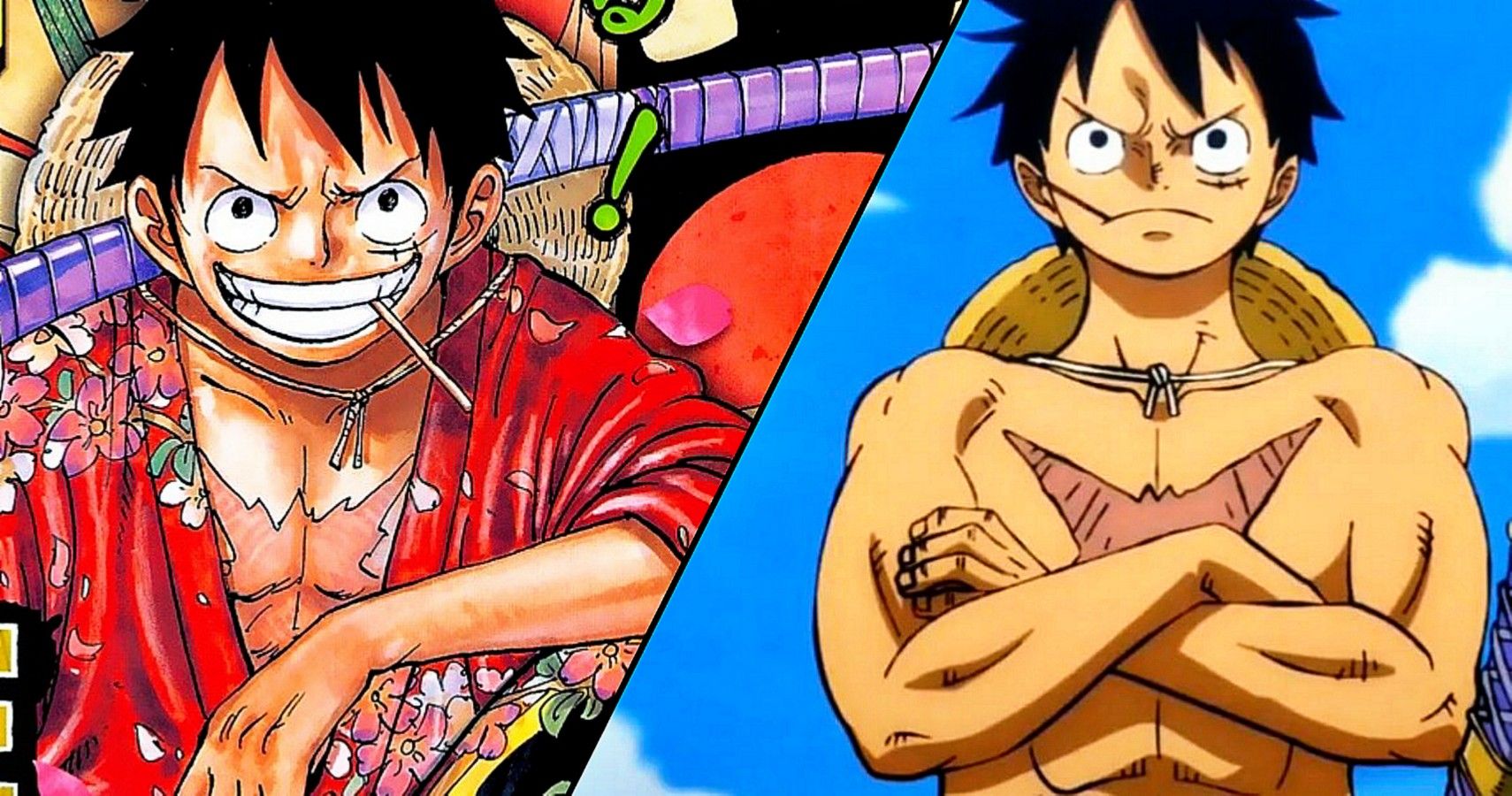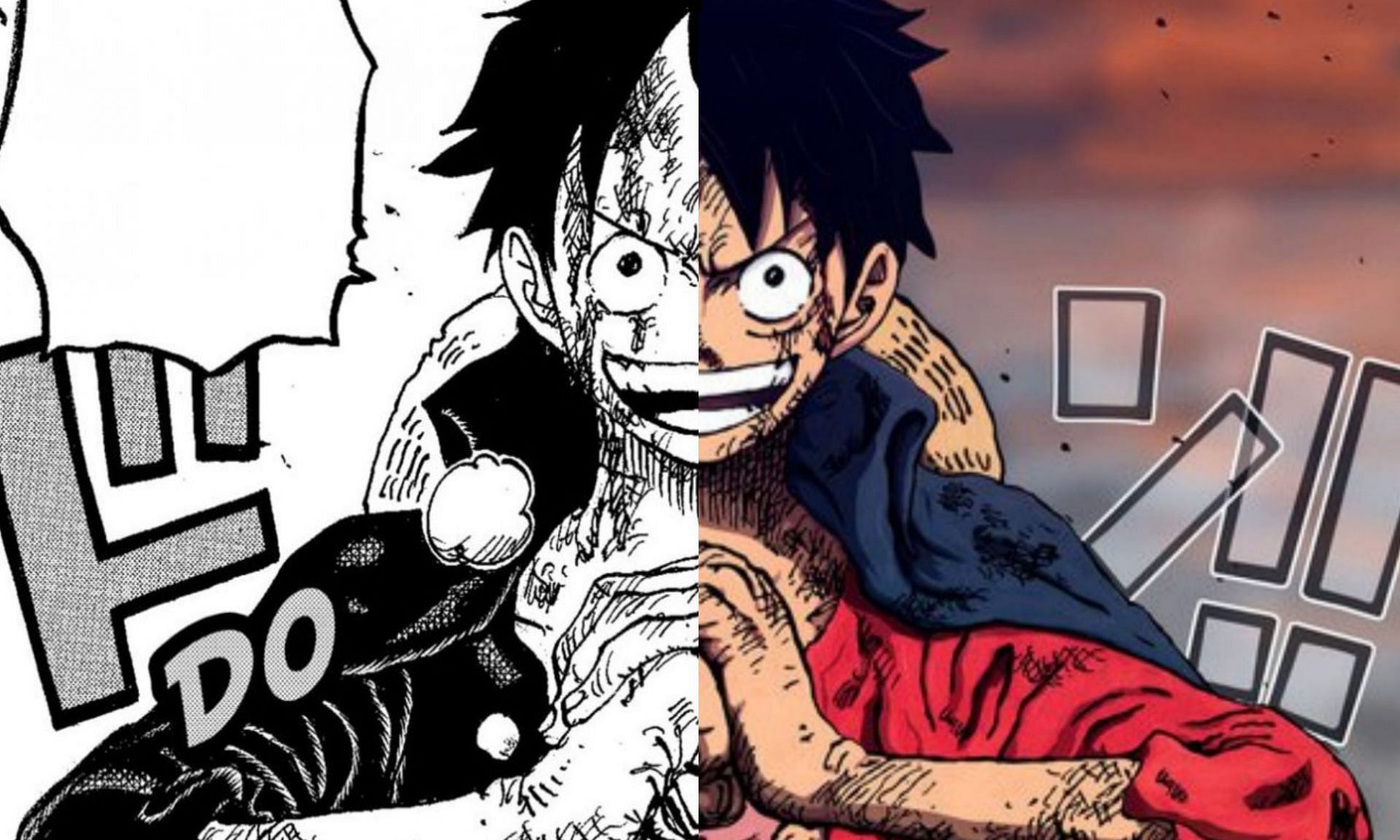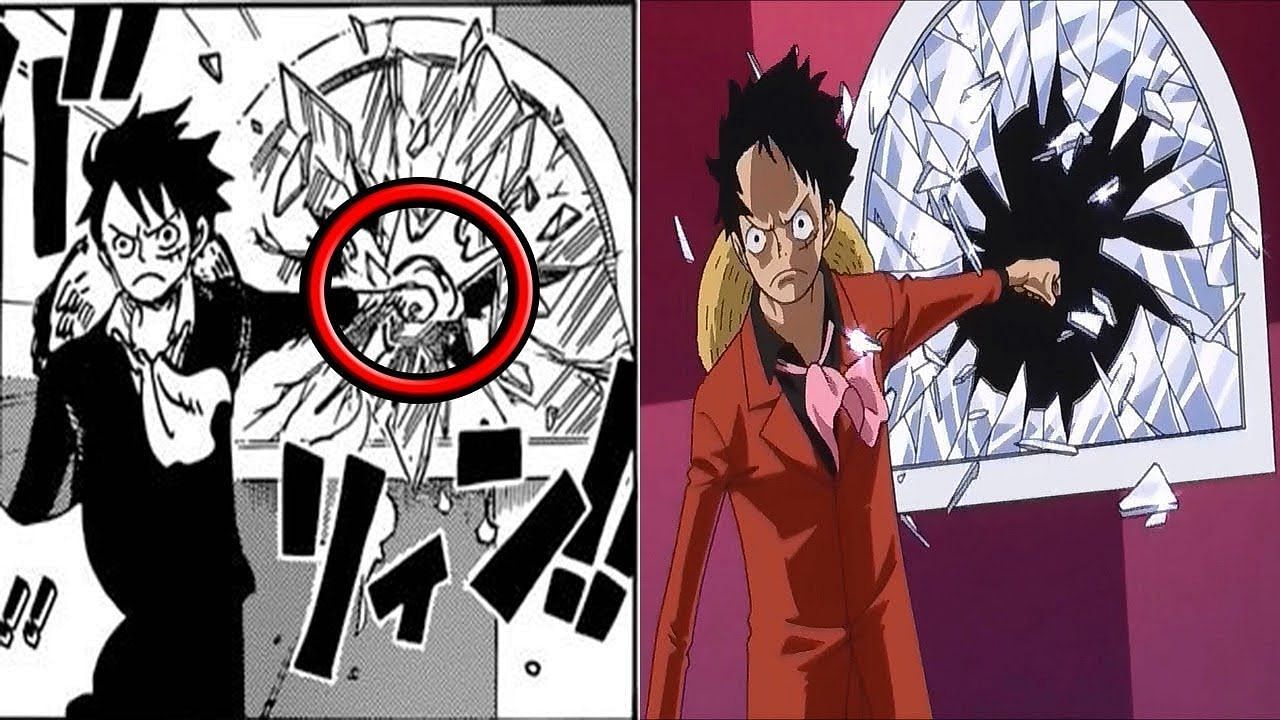Manga or Anime One Piece? Dude, it’s both! This epic saga’s totally blown up, becoming a global phenomenon. From its humble beginnings to its current insane popularity, One Piece has conquered hearts and minds worldwide, inspiring crazy cosplay, mountains of merch, and devoted fan communities. Seriously, this ain’t your average shonen anime; it’s a whole other level.
We’re diving deep into everything One Piece: the wild story, the awesome characters, the killer art style, and the epic world it’s built. We’ll explore its impact on pop culture, analyze the narrative structure, and dissect the characters’ journeys. Get ready for a wild ride!
One Piece: A Global Phenomenon
Yo, what’s up, fellow Straw Hats? One Piece ain’t just some anime; it’s a straight-up cultural tsunami. This ain’t your grandpappy’s shonen manga – we’re talkin’ global domination, serious merch game, and a fanbase that’s more loyal than a golden retriever. Let’s dive into why One Piece has totally blown up and continues to rule the world.
One Piece’s Global Success and Milestones
From its humble beginnings in 1997, One Piece has consistently smashed records. The manga’s serialization in
-Weekly Shonen Jump* quickly gained traction, building a massive following in Japan. The anime adaptation, starting in 1999, further expanded its reach internationally. Major milestones include the surpassing of 500 million copies sold, numerous film adaptations, and consistent top rankings in manga and anime popularity polls.
The franchise’s global success can be attributed to its compelling narrative, memorable characters, and consistent high-quality production.
One Piece’s Cultural Impact
One Piece’s influence extends far beyond the pages of the manga and the screen. The sheer amount of merchandise – figures, clothing, video games – is insane. Cosplay communities worldwide regularly showcase their love for the series. Fan-made content, from art to music to fanfiction, is abundant, proving the series’ enduring appeal and its capacity to inspire creativity.
Online forums and social media are buzzing with discussions, theories, and fan art, creating a vibrant and interconnected global community.
Comparative Reception of One Piece
While One Piece enjoys widespread popularity, its reception varies across different regions. In Japan, it’s a national treasure, a cultural icon. In North America and Europe, its popularity has steadily grown over the years, fueled by streaming services and increased accessibility. Latin America and Southeast Asia also show incredibly high levels of engagement with the series, demonstrating its universal appeal.
Differences in cultural context may slightly influence interpretation and fan preferences, but the core themes of adventure, friendship, and freedom resonate globally.
Unraveling One Piece’s Narrative
One Piece’s story is a sprawling epic, a rollercoaster of adventure and heart-stopping action. It’s got layers upon layers, twists and turns that keep you guessing. Let’s break down the narrative structure and what makes it so captivating.
Overarching Narrative and Key Plot Points
The overarching narrative follows Monkey D. Luffy’s quest to find the legendary treasure, One Piece, and become the King of the Pirates. The story unfolds through a series of self-contained arcs, each introducing new characters, locations, and challenges. Key plot points include the formation of the Straw Hat Crew, the encounters with powerful antagonists like Crocodile and Kaido, and the ongoing exploration of the Grand Line.
The interconnectedness of these arcs, slowly revealing the greater mysteries of the world, keeps the story fresh and engaging.
Manga vs. Anime Pacing and Storytelling
The manga and anime tell the same story, but with different paces and styles. The manga boasts a faster pace, focusing on action and plot progression. The anime, on the other hand, allows for more character development, emotional depth, and extended fight sequences. Both versions have their strengths; the manga offers a punchier reading experience, while the anime provides a more immersive visual experience.
Recurring Themes and Motifs
Friendship, freedom, and the pursuit of dreams are central themes throughout One Piece. The unwavering bond between Luffy and his crew is a powerful recurring motif, emphasizing the importance of loyalty and camaraderie. The exploration of different cultures and societies highlights the diversity of the world and the importance of understanding different perspectives. The recurring motif of overcoming obstacles through determination and perseverance underscores the message of never giving up on one’s dreams.
The Straw Hats and Beyond: Character Development
One Piece’s cast is huge, brimming with diverse personalities and compelling backstories. Let’s focus on the crew’s growth and the antagonists who challenge them.
Luffy and the Straw Hat Crew’s Journey

Luffy’s journey isn’t just about finding One Piece; it’s about forming a family and becoming a true captain. We see his crew grow, both individually and as a unit. Zoro’s unwavering loyalty, Nami’s resourcefulness, Usopp’s courage, Sanji’s chivalry, Chopper’s compassion, Robin’s thirst for knowledge, Franky’s ingenuity, Brook’s unwavering spirit – each member contributes to the crew’s strength and their collective journey.
Their individual struggles and triumphs intertwine, creating a powerful and emotional narrative.
Significant Character Arcs and Their Impact
Many characters undergo significant transformations throughout the series. For instance, Nami’s journey from a thief to a loyal navigator is a powerful testament to the transformative power of friendship. Usopp’s growth from a cowardly liar to a brave warrior demonstrates the potential for personal growth and overcoming self-doubt. These character arcs enrich the overall narrative, adding emotional depth and resonance.
Antagonists and Their Motivations
One Piece’s antagonists are rarely one-dimensional villains. They often have complex motivations and compelling backstories. Characters like Crocodile, Doflamingo, and Kaido, while ruthless, have their own reasons for their actions. Understanding their motivations adds layers of complexity to the narrative, making them more than just obstacles for Luffy to overcome.
Finish your research with information from company and private life manga.
Main Character Profiles
| Character | Ability | Backstory |
|---|---|---|
| Monkey D. Luffy | Gum-Gum Fruit (Paramecia-type) | Son of Dragon, raised by his grandfather, aims to be King of the Pirates |
| Roronoa Zoro | Master swordsman | Aspiring world’s greatest swordsman, strong sense of loyalty |
| Nami | Expert navigator and thief | Orphaned, joined the crew to protect her village |
| Usopp | Marksman and inventor | Son of a renowned sniper, overcomes his fears |
One Piece’s Visual Feast
The art style of One Piece is instantly recognizable, a vibrant and dynamic blend of action and character. Let’s explore the visual elements that make the series so visually appealing.
Artistic Styles of Manga and Anime
Eiichiro Oda’s manga art style is characterized by its expressive characters, dynamic action sequences, and detailed backgrounds. The anime adaptations generally maintain the spirit of the original art, but with varying degrees of animation quality and stylistic choices across different seasons and studios. The character designs are distinct and memorable, with exaggerated features that enhance their personality and expressiveness.
Key Visual Elements and Aesthetic Appeal
The vibrant color palette, the expressive character designs, and the dynamic action sequences are key visual elements contributing to the series’ aesthetic appeal. The use of visual metaphors and symbolism further enhances the storytelling, adding depth and meaning to the narrative. The detailed backgrounds often reflect the setting and mood, enhancing the immersion and creating a believable world.
Animation Techniques in Different Adaptations
Different One Piece anime adaptations have utilized varying animation techniques. While some arcs might feature more traditional animation styles, others may incorporate CGI or more advanced techniques. The changes in animation style sometimes reflect budgetary constraints or evolving animation technology, but generally, the core visual identity of One Piece remains consistent.
Memorable Scene Description
One particularly memorable scene is Luffy’s confrontation with Enies Lobby. The sheer scale of the battle, the intensity of the action, and the emotional weight of the moment are visually stunning. The detailed portrayal of the island, the intricate designs of the buildings, and the expressive animation of the characters all contribute to the scene’s impact. The use of light and shadow further enhances the drama, creating a visually arresting and emotionally resonant experience.
Sailing the Grand Line: Worldbuilding

The world of One Piece is vast, diverse, and incredibly detailed. Let’s explore the geography, cultures, history, and how it all ties into the story.
Geography and Political Landscape
The world of One Piece is divided into various seas and islands, each with its unique geography, culture, and political structure. The Grand Line, a treacherous sea with unpredictable weather and powerful currents, serves as the central setting for much of the story. The various islands are controlled by different factions, ranging from pirate crews to world governments, creating a complex and dynamic political landscape.
Diverse Cultures and Societies, Manga or anime one piece
One Piece features a diverse range of cultures and societies, each with its own unique customs, traditions, and beliefs. From the technologically advanced islands to the more primitive societies, the series showcases the breadth of human experience and the importance of cultural understanding. This diversity adds depth and richness to the world, making it feel vibrant and believable.
History and Mythology
The history and mythology of One Piece are intricately woven into the narrative. Ancient kingdoms, legendary pirates, and powerful mythical creatures all play a significant role in shaping the world and influencing the characters’ destinies. The exploration of this history and mythology adds layers of complexity to the story, enriching the overall experience.
World-Building’s Enhancement of Narrative
The detailed world-building enhances the narrative by providing a rich context for the characters’ actions and motivations. The various locations, cultures, and historical events all contribute to the overall story, making it more immersive and believable. The world itself becomes a character, shaping the characters’ journeys and adding depth to the conflicts.
The Soundtrack of Adventure
The music and sound design in One Piece are integral to its immersive quality. Let’s explore how they enhance the experience.
Impact of Music and Sound Design
The music and sound design in One Piece significantly contribute to the emotional impact of the series. Memorable musical themes are associated with specific characters, locations, or moments, enhancing the emotional resonance of those scenes. The sound effects are equally important, adding realism and intensity to the action sequences.
Memorable Musical Themes
Iconic themes like “We Are!” and “Bink’s Sake” have become anthems for the series, evoking a sense of adventure and camaraderie. Other themes are specifically associated with individual characters or groups, adding depth to their portrayal. The music effectively underscores the emotional tone of each scene, enhancing the viewer’s engagement.
Anime and Video Game Soundtracks
The soundtracks of the anime and related video games often share similar musical themes, but with variations to suit the specific context. The video game soundtracks tend to be more action-oriented, while the anime soundtracks often incorporate more emotional and atmospheric pieces. Both, however, maintain the overall tone and style of the One Piece universe.
Iconic Sound Effects
One Piece features many iconic sound effects.
- Luffy’s “Gomu Gomu no…” before stretching his body.
- Zoro’s sword clashes.
- The sound of Nami’s Clima-Tact.
- The dramatic “thump” of a powerful attack.
These sound effects are instantly recognizable and contribute significantly to the series’ overall atmosphere and action sequences.
Themes and Messages: Manga Or Anime One Piece
One Piece is more than just pirates and treasure; it’s a story about friendship, freedom, and the pursuit of dreams. Let’s unpack the deeper messages within the narrative.
Major Themes Explored
Friendship, adventure, freedom, and the pursuit of dreams are central themes throughout One Piece. The unwavering loyalty between Luffy and his crew showcases the power of friendship and the importance of supportive relationships. The exploration of the Grand Line represents the pursuit of adventure and the challenges faced in achieving one’s goals. The recurring motif of freedom underscores the importance of self-determination and the fight against oppression.
Conveying Themes Through Narrative
These themes are conveyed through the characters’ actions, interactions, and relationships. Luffy’s unwavering determination to achieve his dream inspires others, while the challenges faced by the crew highlight the importance of perseverance and teamwork. The exploration of different cultures and societies provides a broader context for the themes of freedom and self-determination.
Moral Dilemmas and Ethical Choices
One Piece explores complex moral dilemmas and ethical choices. Characters are often forced to make difficult decisions, challenging their values and beliefs. The exploration of these dilemmas adds depth and complexity to the narrative, making it more relatable and thought-provoking.
Resonance with Audiences
One Piece’s messages resonate with audiences across various demographics due to its universal themes of friendship, adventure, and freedom. The characters’ struggles and triumphs are relatable, inspiring viewers to pursue their own dreams and overcome their challenges. The series’ positive messages of hope and perseverance contribute to its widespread appeal.
So, yeah, One Piece. It’s not just an anime or manga; it’s a cultural force. From its captivating story and unforgettable characters to its stunning visuals and epic soundtrack, One Piece has cemented its place in anime history. Whether you’re a longtime fan or just starting your adventure, there’s something here for everyone. Prepare to be amazed, because this journey’s far from over!


